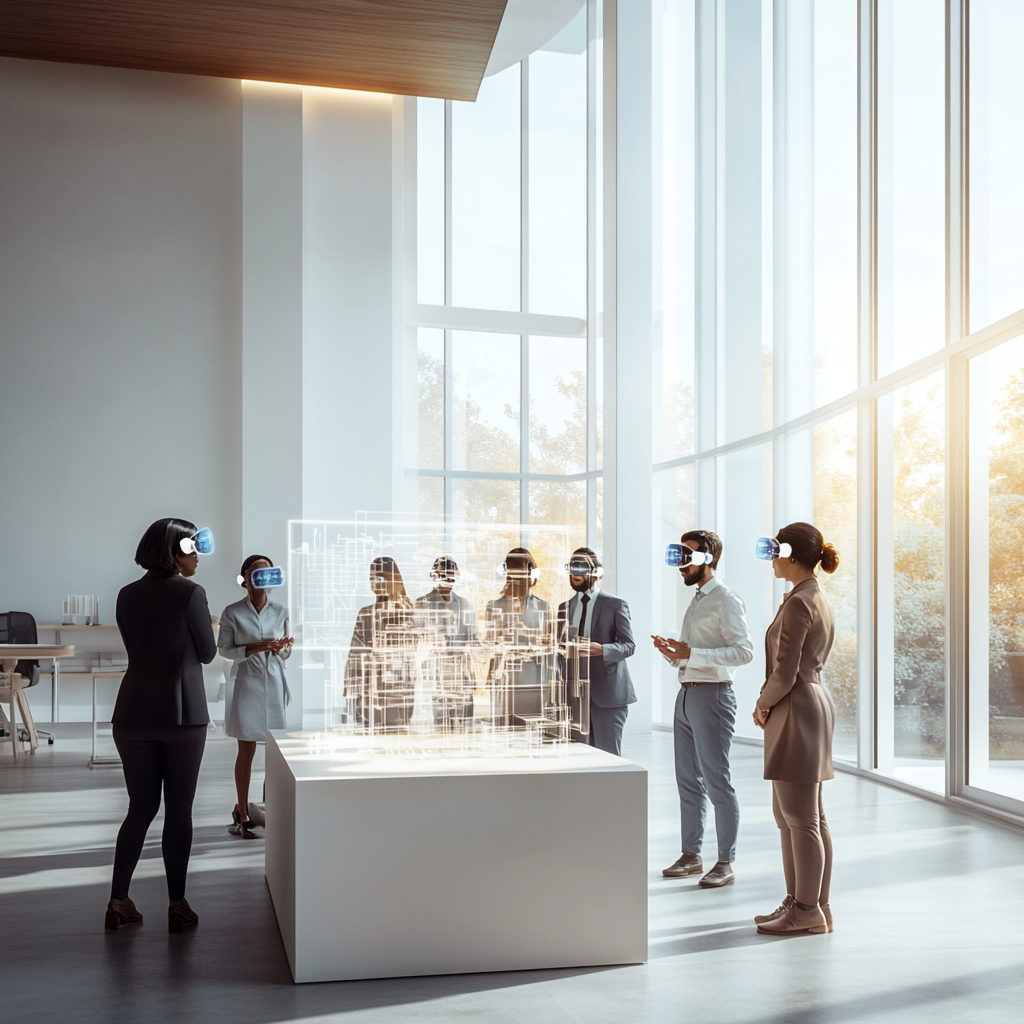Beyond the Desktop: Streaming Enscape VR with QuarkXR & Standalone Headsets

Enscape has revolutionized AEC visualization, offering stunning real-time rendering and immersive Virtual Reality (VR) walkthroughs. Stepping inside your design with Enscape VR provides incredible clarity and understanding, far surpassing traditional 2D drawings or static renders where spatial perception can often be misleading. However, traditionally, this powerful experience has been anchored to a high-performance desktop PC. This tethered setup, while effective, inherently limits mobility, flexibility, and broader adoption.
What if you could take that high-fidelity Enscape VR experience anywhere? To the construction site for real-time comparison? To a client's boardroom without hauling equipment? Or simply enjoy it using those convenient, affordable standalone VR headsets that are rapidly gaining traction in the enterprise?
With QuarkXR, you absolutely can.
The Chain: Traditional Enscape VR's Mobility Challenge

Running Enscape smoothly in VR requires significant local processing power: a potent GPU, ample RAM, and fast storage. Enscape takes great advantage of all of this horsepower: for instance, if you have an NVIDIA RTX GPU, it will utilize NVIDIA's DLSS for improved performance and quality. You can read more about it here.
All this hardware is commonplace in architecture firms and 3D design offices, but clients, remote workers, and other stakeholders don't always have access to such high-end equipment.
Beyond the hardware costs and physical limitations, other challenges include:
- Setup Complexity: Ensuring driver compatibility, managing cables, and configuring the system can be time-consuming.
- Portability Issues: The lack of portability makes spontaneous reviews, on-site comparisons, or presentations in different locations cumbersome, hindering effective communication and collaboration.
- Dedicated Space: PC VR often requires a designated clear space near the workstation.
QuarkXR: Cutting the Cord with Cloud Streaming
As we've discussed before, QuarkXR fundamentally changes the equation by leveraging cloud streaming. Instead of your local device doing the heavy lifting, Enscape runs on a powerful cloud server or remote workstation. QuarkXR efficiently streams the rendered output (the visuals and audio) to your chosen device in real-time, powered by NVIDIA CloudXR, while sending your movements back to the server. Your local device simply acts as a lightweight portal to this powerful remote experience, needing only to decode the stream and handle tracking.
The Perfect Match: QuarkXR and Standalone XR Headsets
This streaming approach unlocks the full potential of modern standalone XR headsets like the Meta Quest series, Pico, HTC, and others. These devices are rapidly gaining enterprise adoption for good reasons:
- Wireless: Offering complete freedom of movement.
- Self-Contained: Integrated tracking means no external sensors or complex setup.
- Portable & Easy to Use: Simple to transport, put on, and operate, even for VR novices.
- Affordable: Significantly lower cost barrier compared to VR-ready PCs.
- Growing Ecosystem: Increasingly used for training, collaboration, and visualization across industries.
While these headsets lack the onboard power to run Enscape scenes natively, QuarkXR bridges that gap. By streaming the experience, QuarkXR transforms these accessible standalone devices into high-performance VR portals capable of displaying intricate Enscape models with impressive fidelity, making high-end VR accessible to a much broader audience.
QuarkXR in Action
Last month, we did a talk at NVIDIA GTC with Daniel Stine and Hadi M Nsouli, showcasing how Lake|Flato Architects utilized QuarkXR and T-Mobile 5G to stream Enscape VR renders of the SAT airport's new terminal building. We plan to cover the specific setup and use of 5G technology in a future article.
Above, you can see a video by Dan, which compares a typical Enscape VR setup using a powerful gaming laptop, to our new paradigm of utilizing Cloud streaming. It's not just about the much shorter setup time, but now you don't need to carry around nearly as much equipment.
Eventually, XR headsets will have 5G connectivity natively. This means that all you'll need is a slim headset, which you can throw in your backpack and stream XR from anywhere!
New Possibilities: Mobile Enscape VR Use Cases
This combination of QuarkXR streaming and standalone XR headsets unlocks powerful, flexible workflows for AEC professionals:
- On-Site Immersive Comparison: Walk the actual construction site wearing an XR headset. Stream the Enscape model via QuarkXR and directly compare the planned design with the as-built reality in a 1:1 immersive scale. Spot clashes, verify dimensions, or review installations instantly, improving communication and reducing rework.
- Effortless Client Presentations: Bring a standalone headset to your client's office or even mail them one. Eliminate worries about their IT setup. Let them step inside their future building via the QuarkXR stream for a far more compelling and understandable experience than 2D plans. With QuarkXR, you can even lead the tour collaboratively, controlling navigation so the client can focus on the design.
- Flexible Team Collaboration: Enable team members across different locations to join collaborative VR design reviews using portable standalone headsets. Meet inside the virtual model to discuss issues, make annotations, and reach decisions faster, reducing miscommunication and travel costs.
Untether Your Designs
Stop letting hardware limitations and physical tethers dictate where and how you experience Enscape VR. QuarkXR, combined with the convenience and growing power of standalone XR headsets, frees your designs from the desktop. Experience true mobility, enhance collaboration, improve client understanding, and make high-fidelity immersive visualization an accessible part of your everyday workflow.
Ready to take your Enscape VR workflow mobile?
Enscape Case Study with Lake|Flato / Contact Us
Latest projects and company updates
Subscribe to our newsletter



